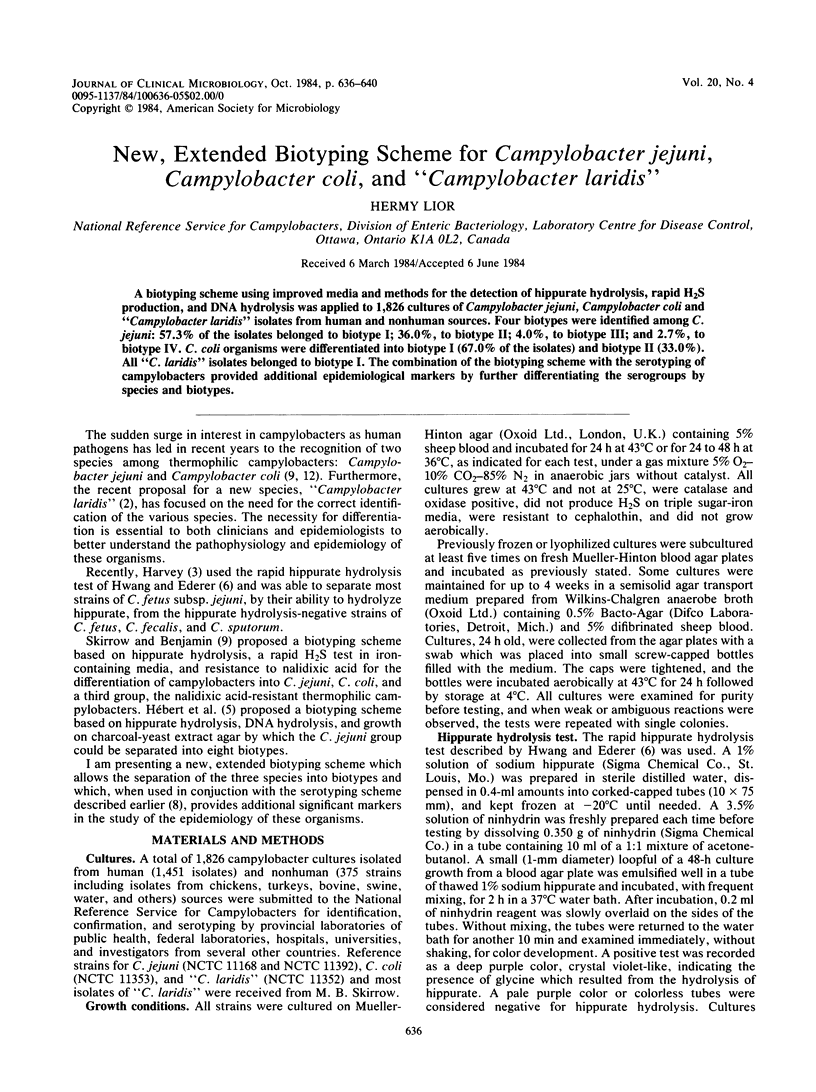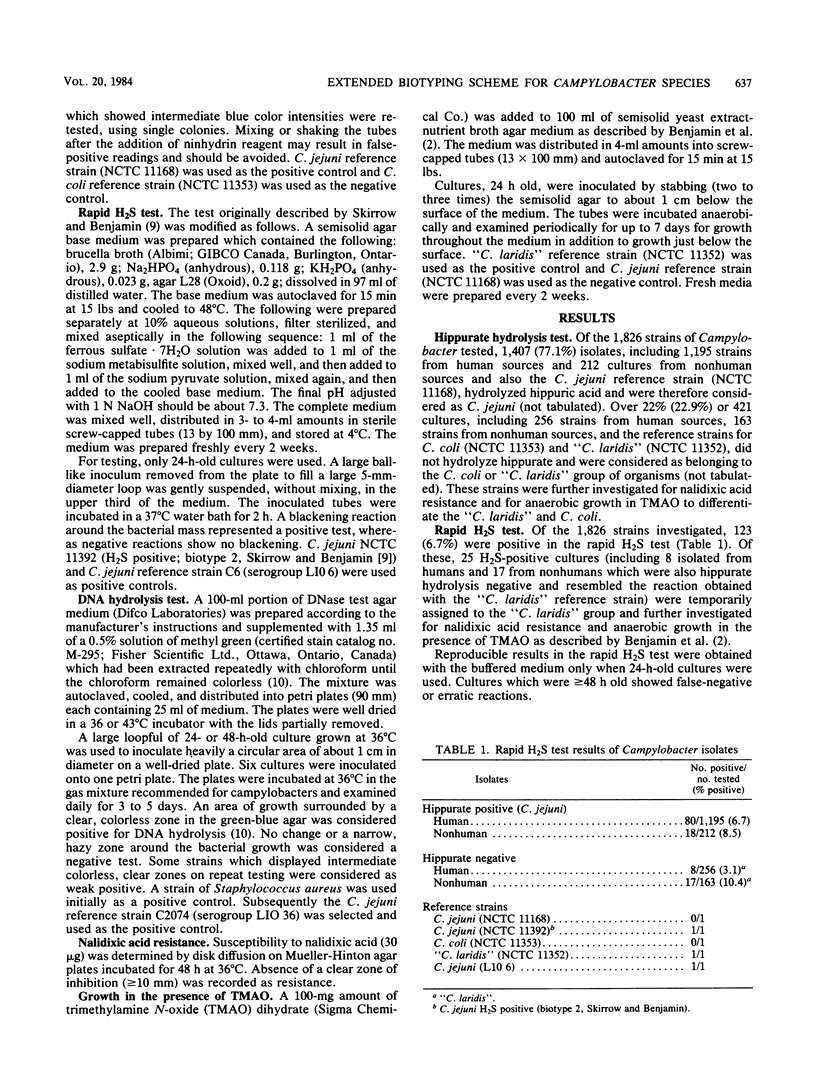Abstract
A biotyping scheme using improved media and methods for the detection of hippurate hydrolysis, rapid H2S production, and DNA hydrolysis was applied to 1,826 cultures of Campylobacter jejuni, Campylobacter coli and "Campylobacter laridis" isolates from human and nonhuman sources. Four biotypes were identified among C. jejuni: 57.3% of the isolates belonged to biotype I; 36.0%, to biotype II; 4.0%, to biotype III; and 2.7%, to biotype IV. C. coli organisms were differentiated into biotype I (67.0% of the isolates) and biotype II (33.0%). All "C. laridis" isolates belonged to biotype I. The combination of the biotyping scheme with the serotyping of campylobacters provided additional epidemiological markers by further differentiating the serogroups by species and biotypes.
Full text
PDF




Selected References
These references are in PubMed. This may not be the complete list of references from this article.
- Belland R. J., Trust T. J. Deoxyribonucleic acid sequence relatedness between thermophilic members of the genus Campylobacter. J Gen Microbiol. 1982 Nov;128(11):2515–2522. doi: 10.1099/00221287-128-11-2515. [DOI] [PubMed] [Google Scholar]
- Harvey S. M. Hippurate hydrolysis by Campylobacter fetus. J Clin Microbiol. 1980 Apr;11(4):435–437. doi: 10.1128/jcm.11.4.435-437.1980. [DOI] [PMC free article] [PubMed] [Google Scholar]
- Hwang M. N., Ederer G. M. Rapid hippurate hydrolysis method for presumptive identification of group B streptococci. J Clin Microbiol. 1975 Jan;1(1):114–115. doi: 10.1128/jcm.1.1.114-115.1975. [DOI] [PMC free article] [PubMed] [Google Scholar]
- Hébert G. A., Hollis D. G., Weaver R. E., Lambert M. A., Blaser M. J., Moss C. W. 30 years of campylobacters: biochemical characteristics and a biotyping proposal for Campylobacter jejuni. J Clin Microbiol. 1982 Jun;15(6):1065–1073. doi: 10.1128/jcm.15.6.1065-1073.1982. [DOI] [PMC free article] [PubMed] [Google Scholar]
- Kodaka H., Lombard G. L., Dowell V. R., Jr Gas-liquid chromatography technique for detection of hippurate hydrolysis and conversion of fumarate to succinate by microorganisms. J Clin Microbiol. 1982 Nov;16(5):962–964. doi: 10.1128/jcm.16.5.962-964.1982. [DOI] [PMC free article] [PubMed] [Google Scholar]
- Lior H., Woodward D. L., Edgar J. A., Laroche L. J., Gill P. Serotyping of Campylobacter jejuni by slide agglutination based on heat-labile antigenic factors. J Clin Microbiol. 1982 May;15(5):761–768. doi: 10.1128/jcm.15.5.761-768.1982. [DOI] [PMC free article] [PubMed] [Google Scholar]
- Skirrow M. B., Benjamin J. Differentiation of enteropathogenic Campylobacter. J Clin Pathol. 1980 Nov;33(11):1122–1122. doi: 10.1136/jcp.33.11.1122. [DOI] [PMC free article] [PubMed] [Google Scholar]
- Smith P. B., Hancock G. A., Rhoden D. L. Improved medium for detecting deoxyribonuclease-producing bacteria. Appl Microbiol. 1969 Dec;18(6):991–993. doi: 10.1128/am.18.6.991-993.1969. [DOI] [PMC free article] [PubMed] [Google Scholar]


